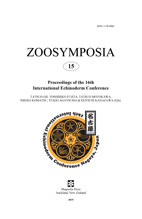Abstract
The phylum Echinodermata includes an estimated 7,000 extant and 13,000 extinct species. Each living class represents a separate body plan with a unique mode of movement and locomotion. Brittle stars (Class Ophiuroidea) utilize complex arm musculoskeletal physiology for rapid locomotion, in contrast to the other echinoderm classes, which are typically slow moving. Ophiuroid locomotion and its origins are poorly understood. This paper is a review of the current state of ophiuroid research, with a focus on topics relevant to ophiuroid movement and locomotion, including anatomy, physiology, functional morphology, disparity, ecology, and evolutionary history.

